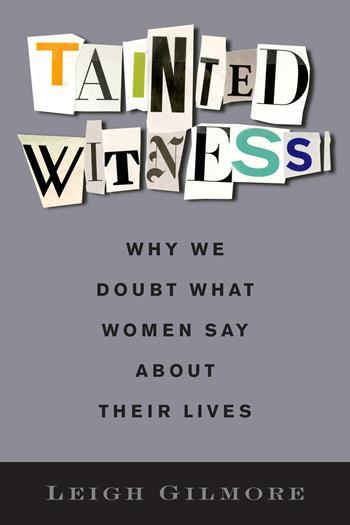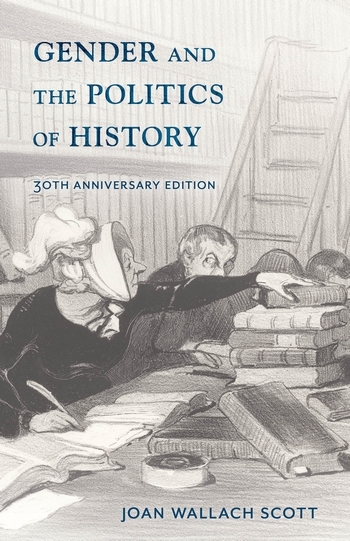Narrative Activism
#MeToo from Harriet Jacobs to Tarana Burke
Leigh Gilmore

Especially in its early months in 2017, #MeToo was often described as unprecedented. Social media received credit for bringing a new level of public awareness to the scale of sexual abuse and, as a result, generating consequences for abusers. Certainly, this shift toward accountability felt new, as notorious abusers like Harvey Weinstein lost positions of power and even faced criminal prosecution. But neither the novel technology of social media nor the exposure of high-profile predators like Weinstein persuaded millions worldwide to share #MeToo. Nor do either explain how #MeToo shifted the deeply engrained response to women’s accounts of sexual violence from doubting all of them to believing some of them. For that, we must contextualize #MeToo within a long history of feminist thought and activism, powerfully advanced in the U.S. by Black women, and in local communities around the globe. Although this history was left at the threshold in the rush to cover #MeToo as breaking news, it clarifies how Tarana Burke’s movement traveled so fast and so far and why its signature form was personal storytelling. This context begins almost two hundred years ago with the abolitionist autobiography of Harriet Jacobs.
Published in 1861, Incidents in the Life of a Slave Girl provides a template for the narrative activism that defines #MeToo. Almost two hundred years ago, Harriet Jacobs knew well that “there is no shadow of law to protect” Black girls and women “from insult, from violence, or even from death; all these are inflicted by fiends who bear the shape of men.” Because she had no legal recourse as an enslaved person, Jacobs sought to create a hearing through autobiographical narrative, rooting her call to action in a personal account of sexual violence. Tracing a line from Tarana Burke to Harriet Jacobs reveals a long-standing tradition of narrative activism—which I define in the #MeToo Effect as storytelling in the service of social change. The resurgence of that tradition propelled #MeToo beyond the courts and into a global movement with survivors as authorities on sexual violence.
Jacobs describes how she was subjected to threats of rape by the slaveholder Dr. Flint (a pseudonym for James Norcom). His campaign was incessant, and she had no means to escape: “My master met me at every turn, reminding me that I belonged to him, and swearing by heaven and earth that he would compel me to submit to him.” She resisted verbally and evaded him as best she could. When she fell in love with a free Black man, they sought to purchase her freedom, ending her subjugation as an enslaved woman. Flint refused and devised a plan to build a separate house in which to isolate Jacobs so he could have sexual access to her without interference. Given the threat of imprisonment and rape, Jacobs allowed Mr. Sands, a pseudonym for local white slaveholder Samuel Tredwell Sawyer, to court her and began a relationship with him. They had two children. Within conditions of extreme coercion and with exceedingly narrow room to maneuver, Jacobs “chose” the less bad option of a relationship with Sands. Her real-world exercise of constrained agency highlights how false it is to define consent as any sexual act to which women say yes when it is impossible or worse to say no. This message resounds in contemporary #MeToo discussions about consent.
Tracing a line from Tarana Burke to Harriet Jacobs reveals a long-standing tradition of narrative activism…
Jacobs writes for a broad readership, but at certain points she directly addresses “white women of the north.” To convince these readers that she was degraded by the threat of rape, just as they would be, she shapes her narrative to persuade them to put themselves in her place. She urges white women toward a “me too” recognition of the harm white men do. More expansively, Jacobs offers a structural critique, connecting Flint’s threats of rape to a larger pattern faced by all enslaved women and indicting an entire system and the white men, women, and children who benefit from it. In the person of “Mrs. Flint,” white women are represented as debased: jealous and vengeful, but also libidinally entangled in the sexual violation of slavery. While “Flint” whispered his threats to fourteen-year-old Jacobs during the day, “Mrs. Flint” brooded threateningly over Jacobs as she slept. Jacobs elaborates, “Sometimes I woke up, and found her bending over me. At other times she whispered in my ear, as though it were her husband who was speaking to me, and listened to hear what I would answer. If she startled me, on such occasion, she would glide stealthily away; and the next morning she would tell me 1 had been talking in my sleep, and ask who I was talking to. At last, I began to be fearful for my life” (33). Hortense Spillers memorably describes these encounters as “so charged with elements of sexual frisson and the mishaps of ecstasy that we are led to believe that the wife is invigilating the young woman in her own behalf” (35). White women like “Mrs. Flint” do not stand apart from their husbands’ speech and actions. Instead, they reproduce sexual violence, as this disturbing image shows.
The role of the fully implicated white “mistress” joins a gallery of complicit white women recounted in the narrative: from the “benevolent” woman who owned Jacobs’s mother and falsely promised to free her to the white women who bequeath ownership of enslaved girls like Jacobs to their daughters as a generational transfer of wealth, the role of southern white women must have struck the “white women of the north” as something they needed to disavow. Yet if northern readers did not see themselves in the corrupt “Mrs. Flint,” were they nonetheless able to recognize themselves in Jacobs’s portrayal of the well-intentioned woman who failed to secure her mother’s manumission? Jacobs holds white women to account by compelling them to look at how the actions of other white women perpetuate slavery.
The forgetting of this history as the lineage of Tarana Burke’s “me too” speaks to the racial politics of sexual violence.
The forgetting of this history as the lineage of Tarana Burke’s “me too” speaks to the racial politics of sexual violence. Historian Catherine Jacquet, for example, argues that antirape campaigns by racial justice activists had a continuous history from the mid-nineteenth to the twentieth century, but waned in the 1960s as the focus of Black activism turned to civil rights. Many white feminists who began organizing rape hotlines, crisis centers, and self-defense training in the 1970s, Jacquet notes, “believed that their work in speaking out on behalf of victims was unprecedented. Most were wholly unaware of the history that preceded them.” The authorship of Incidents was erased in the decades after Jacobs’s death. By the time Jacob’s biographer Jean Fagan Yellin was studying slave narratives in graduate school in the 1970s, the scholarly consensus was that white Quaker Lydia Maria Child wrote the narrative. Only a massive archival undertaking restored what had previously been common knowledge because the work of Black women to expose and end sexual violence is not woven into official history.
In the mid-1970s, white feminist activist Susan Brownmiller wrote, “That women should organize to combat rape was a woman’s movement invention.” Mindful of Black feminist lineage, however, the Combahee River Collective, a Black feminist organization active in Boston from 1974 to 1980, fused feminist and civil rights activism. They argued for a Marxist, lesbian stance on community solidarity and an anticarceral and antisexist response to sexual harassment and assault. They did not embrace the separatism they associated with white radical lesbians and they wrote critically about the hypermasculinity of the Black Panther movement. They challenged white feminists on racism and Black men on sexism through a critique of the violence of white supremacy. The feminist lineage of intersectionality, a term coined by law professor Kimberlé Crenshaw, demonstrates how self-reflexive positioning provides a specific stance on sexual violence. The Combahee River Collective offers insights into how subjects are entangled with each other through white supremacy, patriarchy, and a politics of resistance. It explains the decision to shield men of color from racist violence while also holding them accountable for sexual violence, and to insist on protecting Black and brown trans women from transphobia and what Moira Bailey calls misogynoir. This is a lineage that was overlooked when #MeToo was described as unprecedented.
By clarifying the roots of #MeToo, we can understand how survivors have used narrative to reframe themselves as authoritative and credible, to hold abusers accountable, and to identify sexual violence as an urgent problem requiring structural solutions.
By clarifying the roots of #MeToo, we can understand how survivors have used narrative to reframe themselves as authoritative and credible, to hold abusers accountable, and to identify sexual violence as an urgent problem requiring structural solutions. #MeToo tapped into a lineage that links Jacobs to Burke to become another episode in the long-standing tradition of using personal narrative as a call to action. When social networks like Twitter enabled an outpouring of stories of sexual abuse, ignorance of this narrative tradition caused many to call #MeToo unprecedented, highlighting the overnight change in accountability while omitting the feminist intellectual, aesthetic, and political context necessary for understanding three of its key features: why storytelling is the signature form of #MeToo; how literature and life writing serve as a resource in the long struggle against sexual violence; and why narrative testimony rebalances the cultural conversation away from law, where survivors are structurally unequal to those who abuse them, and toward life writing where they have greater flexibility in telling their stories and having them heard.
It is appealing to call something unprecedented when it is unlike what surrounds it, especially when it appears that a norm is breaking down, like the silencing of survivors and the routine impunity granted to abusers. At such moments, it is important to signal that something is changing. When the old explanations start to sound like excuses, histories of abuse and protest are reawakened. And just as unprecedented was the word that came readily to mind to describe a break with the past, reckoning was as frequently used to describe a new stance toward a past that would offer a path forward. Both words as temporal markers carry the implicit meaning that things can change. And this is what #MeToo seeks above all: change. Within institutions, in how we talk about past sexual violence, and in the norms of who gets centered rather than silenced.
Leigh Gilmore is professor emerita of English at the Ohio State University. She is the author of Tainted Witness: Why We Doubt What Women Say About Their Lives and The #MeToo Effect: What Happens When We Believe Women.








